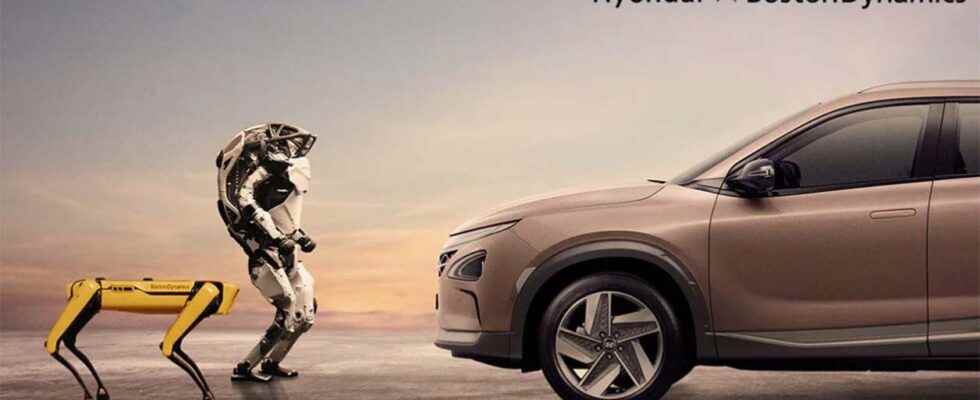This Sunday, March 6 in Paris, the half-marathon opened with a funny performance. The Boston Dynamics Spot robot covered the last kilometer of the race before starting a little choreography to a tune by the Korean group BTS.
Also see video:
The K-pop stars had already appeared in a video with the machine in June of last year.
A priori, one could say that Boston Dynamics has fallen very low since it was bought in December 2020 by the car manufacturer Hyundai. Are its robots really reduced to animating the events of which the Korean giant is a partner? But Spot’s current European tour isn’t just about posting. Hyundai has a very clear vision of what Boston Dynamics can bring to it. Perhaps the Korean giant is the first to know what to do with this nugget.
Boston Dynamics, a nugget of robotics
Originally, Boston Dynamics was a spin-off of MIT founded in 1992 by Marc Raibert, currently still operational within the management. His funny bipedal and quadrupedal robots will first interest the American army. It is thanks to projects funded by Darpa that the company develops BigDog or Atlas, whose prowess drives YouTube crazy.
The results obtained are exceptional: these machines move with unprecedented virtuosity and fluidity. Their resemblance to animals, even humans, is also disturbing, even disturbing. It could suggest that this type of robot could one day turn against us, as in Metalhead, episode of the series black-mirror inspired by their performances.

The failure of Google and Softbank
But these robots are fragile, expensive to manufacture, with no real application or market. This is the reason why the various companies that have taken over Boston Dynamics in recent years have all broken their teeth. This was the case with Google in 2013 and Softbank Robotics in 2017. The Japanese conglomerate had nevertheless tried to market Spot as a scout robot capable of monitoring industrial sites or venturing into rugged sites. But it has only sold a few hundred copies since its sale which began in June 2020 after a period of leasing.
So it’s Hyundai’s turn to tackle it. This time, no plan on the comet, but an assumed pragmatism, which does not prevent a great ambition. The company has made it its mission to remove all limits to human mobility so that no place remains inaccessible. And Boston Dynamics has a vital role to play in that regard.

“Spot is a kind of laboratory”
Because selling Spot individually does not really interest Hyundai. The idea is rather to recover its technologies and to share them with the group’s various projects.
“For us, Spot is a demonstrator, a sort of living laboratory that we are constantly testing”, told us the French boss. “We want to look beyond what a traditional car manufacturer does and use Boston Dynamics to enrich all our mobility offers. This will obviously concern autonomous cars, but not only. The mobility of tomorrow will consist of driving but also walking or flying with exoskeletons or flying cars”.
The first application of this strategy will soon be successful.
“We are going to embed Spot technologies on board our Seven concept car”, announced the president of Hyundai Motor France Lionel French Keogh during a press briefing.
“To do this in just 24 months is really short term on the scale of such a heavy industry.”

Sensors such as cameras and radars or even batteries, a whole series of components are concerned. Hyundai is ready to lose money at the moment with Boston Dynamics. He believes that the return on investment will come when the mobility solutions that benefit from it have become sufficiently popular.
Make objects move
Moreover, the brand will not be satisfied with supporting people’s mobility. It also aims to develop solutions for logistics or the delivery of mail and goods. With this in mind, it has recently put forward the concept of MoT, the mobility of objects. The idea is to make inanimate objects mobile.

Last January since CES, it presented the modular Plug & Drive (PnD) platform, (see above) which can be attached to any type of object “from tables to containers”then explained the press release.

At the same event, the Korean also unveiled the MobED (Mobile Eccentric Droid) platform, (see above) which integrates the Drive & Lift (DnL) module, an all-in-one robotic solution based on a mechanism eccentric wheel for service robots.
This branch of the MoT is sure to benefit from Boston Dynamics technologies as well. Because for Hyundai, it is notably thanks to robotics that mobility will evolve. The car manufacturer now devotes 20% of its investments to this sector.
